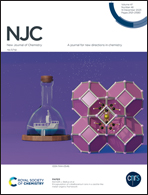One-step synthesis of sulfur-containing carbon nanosheets via solution plasma process for enhanced electrochemical catalyst†
Abstract
Metal–air batteries have emerged as a promising solution for large-scale energy storage and conversion, thanks to their higher energy density than lithium-ion batteries. However, their commercialization as a secondary battery is challenging due to limitations imposed by the properties of individual components. The air cathode, in particular, requires advanced catalyst materials to enhance its performance. This study explores using carbon nanomaterials as a cathode component in metal–air batteries due to their exceptional electrical conductivity and physical/chemical stability. To synthesize heteroatom-containing carbon nanosheets, we employed the solution plasma process (SPP), a non-equilibrium cold plasma technique at atmospheric pressure and room temperature. Our research successfully produced sulfur-containing carbon nanosheets through the SPP and conducted preliminary investigations to evaluate their electrocatalytic activity for both the oxygen reduction reaction and oxygen evolution reaction. These findings contribute to the advancement of metal–air battery technology and bring us closer to overcoming the challenges associated with commercializing this promising energy storage system.



 Please wait while we load your content...
Please wait while we load your content...